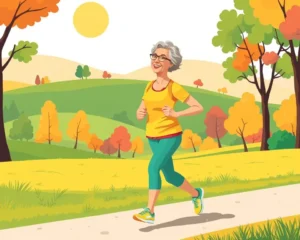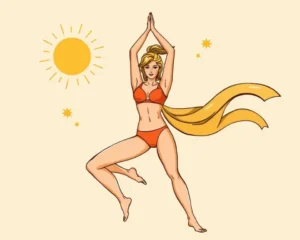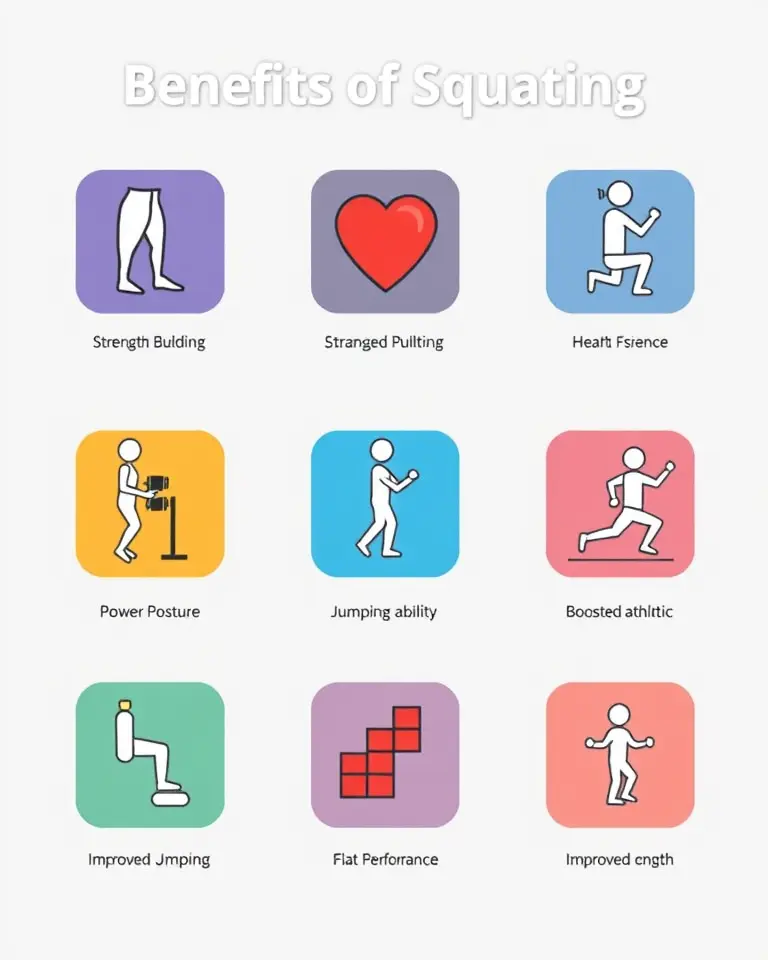Squats are often hailed as the “king” of exercises, and for good reason. This fundamental movement isn’t just about building bigger legs; it’s a full-body powerhouse with a range of benefits that can significantly improve your overall fitness. From beginners to seasoned athletes, incorporating squats into your routine can bring a transformative change. Here’s why you should make squats a staple in your fitness journey.
Build Muscle and Strength
Squats are a compound exercise, meaning they engage multiple muscle groups simultaneously. This makes them incredibly efficient for building overall strength and muscle mass.
Target Multiple Muscle Groups
When you perform a squat, you’re not just working your quadriceps; you are also hitting your hamstrings, glutes, calves, and even your core and lower back muscles. This comprehensive approach promotes balanced muscle development throughout the lower body and core.
Anabolic Environment
Squats help create an anabolic environment in the body, which promotes muscle growth. They work so many muscles at once that the body responds by building muscle mass not just in the legs, but throughout the body. This makes squats an ideal choice for anyone aiming to increase their strength and physique.
Burn Calories and Promote Weight Loss
Squats are not just about strength; they are also fantastic for calorie burning.
High-Intensity Exercise
Performing high-intensity sets of squats can elevate your heart rate and metabolism, which helps you burn calories both during and after your workout. This makes squats an effective tool for weight management.
Increase Metabolism
Since squats engage large muscle groups, they require significant energy expenditure. This leads to an increased metabolic rate, which helps with weight loss by burning more calories over time.
Improve Mobility and Balance
As you age, maintaining mobility and balance becomes increasingly important. Squats play a key role in keeping you mobile.
Enhance Leg Strength
Strong legs are essential for maintaining mobility as you get older. Squats not only develop leg strength but also work out your core and stabilizing muscles, which are key for maintaining balance.
Prevent Falls
By improving the communication between your brain and your muscle groups, squats help prevent falls. This is especially important for seniors and those who want to maintain an active lifestyle for years to come.
Reduce Risk of Injury
Squats strengthen the muscles, tendons, ligaments, and bones in your lower body, which helps reduce the risk of injury.
Strengthen Connective Tissues
Squats help strengthen the connective tissues surrounding the leg muscles. Strong tendons and ligaments are key for joint stability and prevent injuries.
Improve Full-Body Movement
When you strengthen your lower body, you are better able to execute full-body movements with correct form, balance, mobility, and posture, all of which help in reducing the risk of injuries.
Enhance Bone Density
Regularly performing squats can help improve your bone mineral density, leading to stronger bones.
Increase Bone Strength
Squats add strength to your skeleton, especially in the spine and lower body. This helps reduce the risk of fractures and osteoporosis.
Combat Age-Related Bone Loss
As you get older, your bones can lose density. Squats can help combat this by promoting bone growth and strengthening, helping you maintain a healthy skeletal system.
Improve Flexibility
Squats help improve flexibility, which is essential for overall physical health and performance.
Maintain Joint Elasticity
As you become older, your tendons, muscles, and ligaments can lose their elasticity, resulting in stiffness and reduced range of motion. Squats can help to keep these tissues elastic and healthy.
Enhance Range of Motion
Regularly doing squats can help improve your flexibility by keeping your joints mobile and strengthening the muscles around them, which can result in a greater range of motion in daily activities.
Improve Posture and Core Strength
Squats not only strengthen your legs but also help you maintain good posture.
Core Activation
The core muscles are activated during a squat to keep your body stable and upright throughout the movement. This results in a stronger core and better posture.
Mind-Body Connection
Squats improve the mind-body connection and allow you to retain mobility by keeping your body strong as you age. They help you maintain awareness of your body’s position and movements, which contributes to better overall physical health.
How to Start Squatting Safely
While squats offer many benefits, it’s crucial to perform them correctly to avoid injury.
Proper Form
Start by standing with your feet shoulder-width apart, toes facing forward. Engage your core, and hinge at the hips, driving them back while bending your knees and ankles. Keep your chest up, shoulders back, and heels on the ground.
Don’t Overdo It
Beginners should start with 3 sets of 12-15 reps of a basic squat. It’s important to master the basic squat movement pattern before adding any weight. Focus on perfecting your form before progressing to more advanced variations or adding extra weight.
Avoid Common Mistakes
Avoid pushing your knees too far forward, turning them inwards, over-arching your back, or lifting your heels. Make sure to maintain a tight upper back, brace your core and maintain a controlled motion during the descent and ascent.
Types of Squats
There are many variations of squats. Some of them include:
- Air Squat: The most basic form, using just your body weight. This is a great way to perfect your form.
- Goblet Squat: This squat involves holding a weight in front of your chest, which is great for learning proper form.
- Front Squat: In this variation, the barbell is held across the front of the shoulders, which engages the core and upper back even more.
- Back Squat: This classic version places the barbell across the upper traps and targets the entire lower body.
- Box Squat: Utilizing a box or chair, this variation is a great way for beginners to perfect their squat form.
- Bulgarian Split Squat: This unilateral exercise involves elevating one foot behind you and is a fantastic way to improve balance and stability.
- Jump Squat: Incorporating jumps into squats is a great way to build power and increase your heart rate.
Conclusion
Squats are a versatile exercise that can significantly improve your overall fitness. From building strength and muscle to improving balance, mobility, and posture, squats offer a wide range of benefits. Whether you are a beginner or an advanced lifter, incorporating squats into your routine is a fantastic way to take your fitness to the next level. Just be sure to focus on proper form and listen to your body to get the most out of this effective exercise.







